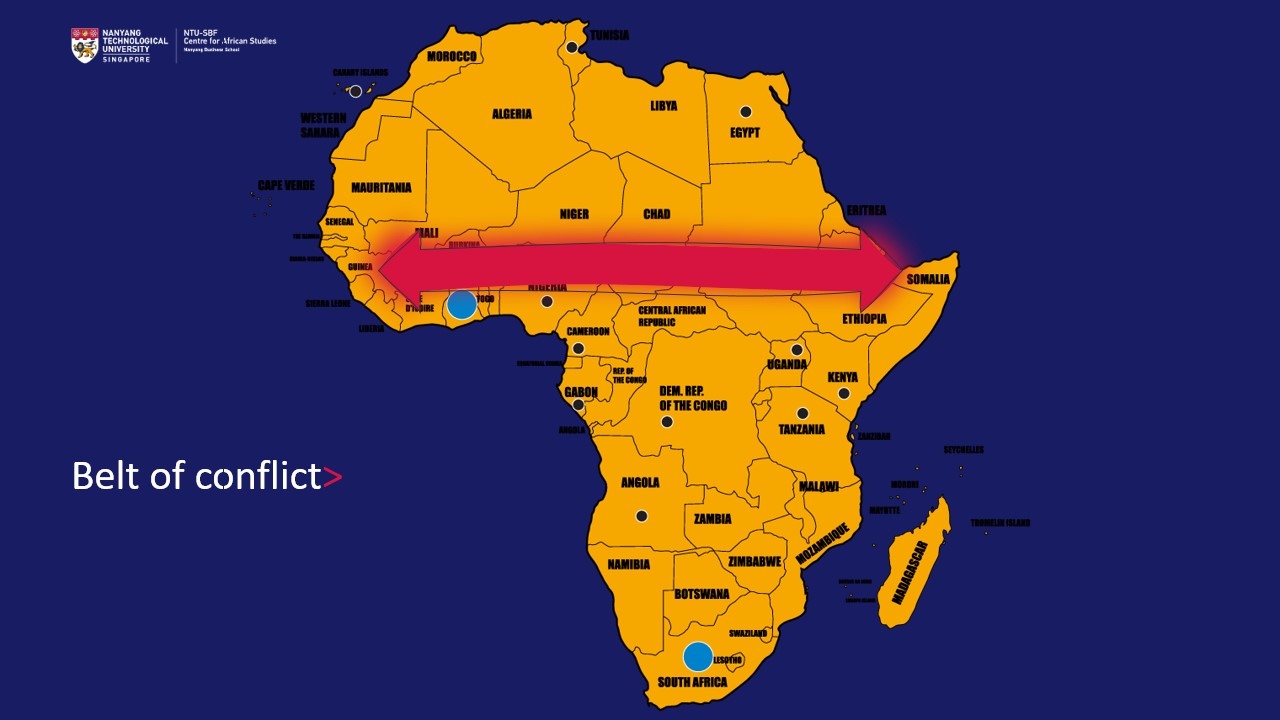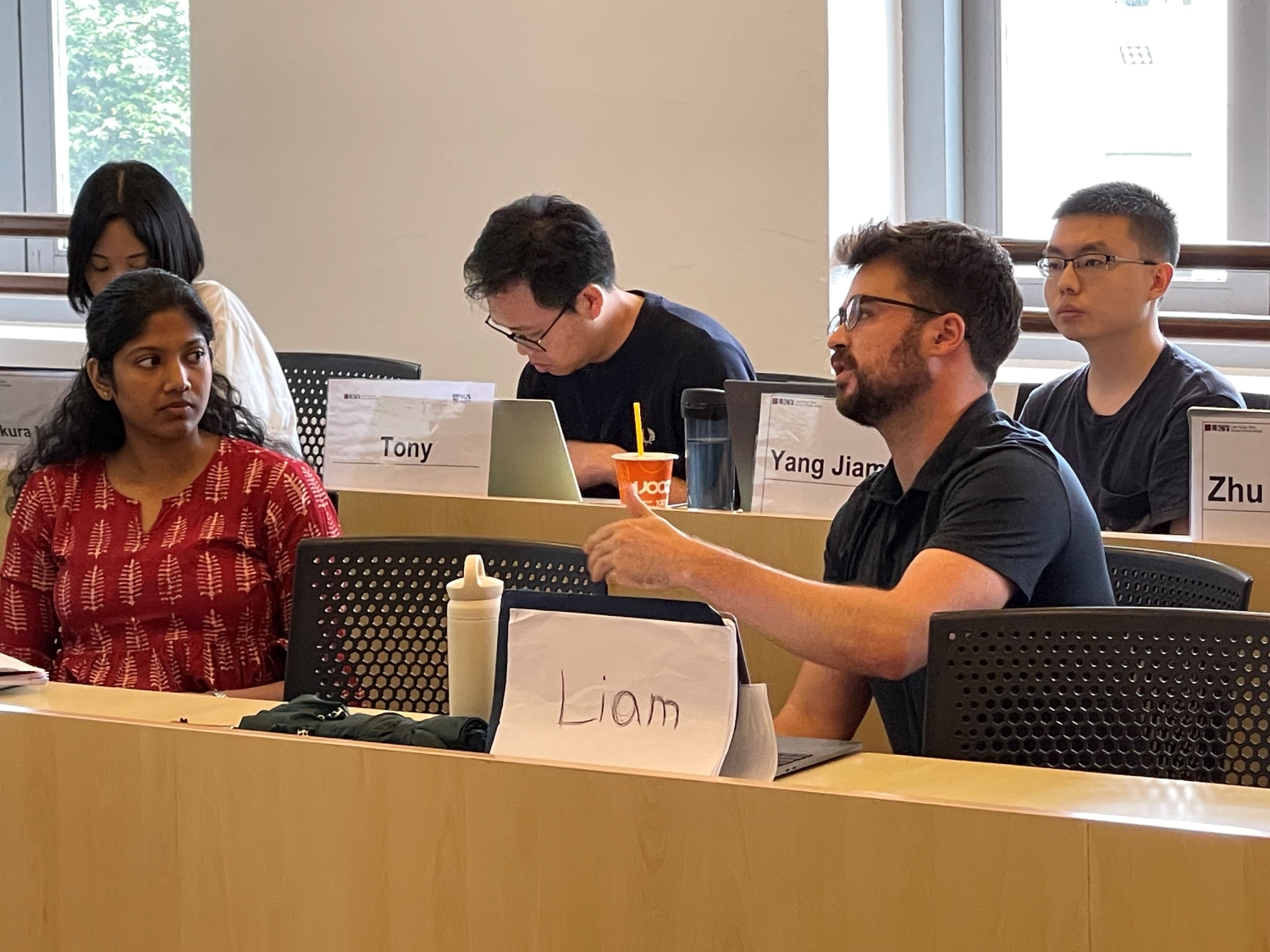Centre Director speaks at the Lee Kuan Yew School of Public Policy
Amit Jain identifies five factors that are fuelling instability in the most conflict prone zones of Africa

The Director of the NTU-SBF Centre for African Studies Amit Jain has identified five factors that, he believes, are fuelling instability across a wide arc that that stretches from the Sahel to the Horn of Africa. The factors he identified were - climate change; natural resources; great power competition; weak state capacity to govern; and ideology.

Speaking to a group of over two dozen graduate students at the prestigious Lee Kuan Yew School of Public Policy in Singapore, he said “Dependence on resources has made resource-rich African states vulnerable to external forces”. Citing the recent backlash against Western interest in the Sahel he said, “Africa is not poor. It has been made poor by this legacy of colonialism that continues to promote the dominance of global north over the global south”.

However, contrary to popular perception Africa is not the most conflict prone region in the world. “Let us go by data,” he said. “Some 162,000 people were killed in some or the other conflict last year (2023). But Africa was not on the top of the list. Asia was on top of the list. In the last 20 years, more people have died due to war and conflict in Afghanistan, Syria, Iraq and Yemen than all of Africa put together. Europe has lost most lives to conflict in the last 500 years than perhaps any other part of the world. Not Africa. But that does not mean Africa is not conflict prone. Africa is the second least peaceful region in the world. Four of the ten most conflict prone regions of the world are African.”
“More than 30 years after the end of the cold war Africa is finding itself once again at the great per competition,” he told the students. “Only this time there are multiple foreign powers competing for influence as well as some home grown ones.” Jain explained the role of foreign middle powers such as the UAE, Turkey, Russia and the West in conflicts from Sudan to Libya as well as the intervention of domestic African powers such as Egypt, Rwanda, and Ethiopia in conflicts outside their borders.
.jpg?sfvrsn=4fd54e8d_3)
He explained how weak state capacity to patrol borders, provide security, and build strong institutions has compromised the creation of a sense of national purpose. “Failure to generate job creating growth has created conditions ripe for conflict” in many parts of the continents, he added. “On average, 60% of Africa’s GDP is spent on debt servicing, which significantly affects resources available to spend on development and real economic growth,” he noted.
When it comes to ideology Jain told the students that the “lure of jihad” across this wide arc of instability feeds on a long tradition of resistance against liberal western ideas of secularism; democracy; individual freedom. “It also stands in conflict ancient traditional customs,” he said citing the destruction of ancient mosques and tombs in Timbuktu. Salafi extremists have carried out public floggings and destroyed mausoleums of Muslim Sufi saints in Mali. Many ‘jihadi’ leaders in Africa are veterans of the Afghan war. They have been groomed in the most conservative tenets of Sunni Salafism. According to Jain the appeal to social morality, masculinity, rough ‘justice’ and sex draws young men to their cause. It does not help that the ruling elite in these countries are widely seen as “corrupt and decadent,” he said.
Jain explained in fair bit detail the contemporary state of affair in the five of the worst conflict hit places in Africa – Ethiopia, Sudan, Somalia, DRC and the Sahel. He concluded by narrating some personal anecdotes from his own travels in the region.














/enri-thumbnails/careeropportunities1f0caf1c-a12d-479c-be7c-3c04e085c617.tmb-mega-menu.jpg?Culture=en&sfvrsn=d7261e3b_1)

/cradle-thumbnails/research-capabilities1516d0ba63aa44f0b4ee77a8c05263b2.tmb-mega-menu.jpg?Culture=en&sfvrsn=1bc94f8_1)







